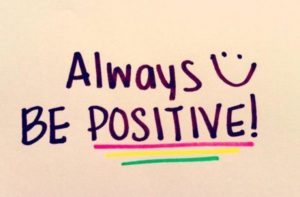[s2If current_user_cannot(access_s2member_ccap_course_004_hh)]
To view this lesson, please purchase this course or log in if you have already purchased it.[/s2If][s2If current_user_can(access_s2member_ccap_course_004_hh)]
This is important enough that I wanted to highlight it. Much of our thinking is habitual. Just as your dog sits when you say the Sit cue, you automatically think a certain way when you perceive certain “cues” in your environment.
The only difference is that most of these cues weren’t specifically trained by someone else, they’re just there because of a random association. A song reminds you of your ex, a food reminds you of your mother, etc. And off you go, away from the present moment. The cool thing is that you can change these habits just as you can for externally observable behavior.
Letting your thoughts be without jumping into them, becoming them, or blowing them out of proportion is a learned skill. It takes practice. And practice. And practice. Noticing that you have thoughts popping up IS the practice.
To combat being distracted from the present, we can build a habit of mindfulness: simply observing that a thought is asking for attention and either deliberately digging into a thought that requires immediate attention or returning your attention to the now. In the present, we feel physical sensations arise and fall in the body, we sense the world around us or focus on the task we are doing, and let the thoughts slip back into oblivion. I’ll talk more about mindfulness later in the course.
Here’s the Buddhist nun Pema Chödrön talking about the habit of distraction from the present moment and shenpa (getting hooked by our thoughts, the urge to scratch the “itch” of our cravings):
The habit of getting lost in harmful thoughts is often straightforward to change using habit changing tips. Some thought patterns need to be untangled by processing grief (which we’ll talk about in week 6) or in therapy.
Reframing thoughts as habits that I developed to respond to an old environment puts me in the driver’s seat, and lets me realize that there’s nothing “wrong” with me (or you). Outdated coping strategies are just habits that were useful at the time, but aren’t needed any more. I can replace my own habitual responses. So can you.

This is a good time to talk about the downside of positivity. It’s popular to try to just think positive thoughts all the time, but this is a form of spiritual bypassing: ideologies that systematically avoid wrestling with and integrating dark emotions. Reframing self-destructive thoughts (like “I suck at dog training”) to something with a healthier perspective is great (“My timing is off, but I can go to chicken training camp to improve it”), but that’s different from ignoring one’s own needs or shoving feelings deep inside.
We are human and we do get sad. Sadness is a natural response to loss or transition, not a character flaw or a problem to fix. There’s just a change that needs some processing to accept. (More on grief in week 6). It’s healthy to acknowledge and feel our feelings when our needs are unmet. We don’t need to run from feelings or put on a happy face.
Having anger also isn’t a character flaw. Anger is just a red flag that something is not right in our world, that a need isn’t being met or a boundary is being crossed. It’s like a dog who growls when you touch a part of his body that hurts. The dog just doesn’t feel comfortable in some way, and the growl is setting that boundary for what feels safe.
Having anger is not the same as hurting someone else with it. I use anger as a signal that I need to dig in and see how I’m feeling hurt, ashamed, or upset in other ways. Underneath, there’s usually some other feelings that are important to recognize and share to increase empathy and understanding. [We’ll talk about all of this more next week when we discuss feelings, needs, strategies, and boundaries.]
Feelings are fine. BUT… we do have habitual thoughts, stories we tell ourselves that lead to feelings. That’s pretty much like reactivity in dogs. Our minds over-react to situations that are actually safe. Those are habits we can often change.
On the flip side we can create habitual thinking patterns that help! I like planting my own self-care reminders. I deliberately associate self-care habits with environmental cues. For example, I decided to use Open signs to remind me to do a short mindfulness exercise.
Whenever I see an Open sign at a business, I observe my breathing for a few cycles and do a body scan. Starting at the top of my head, moving down to my feet, I bring my awareness to my senses in each part of my body, like a medical scanner very slowly, steadily moving its way down. I takes about a minute when I do it this way.
[/s2If]